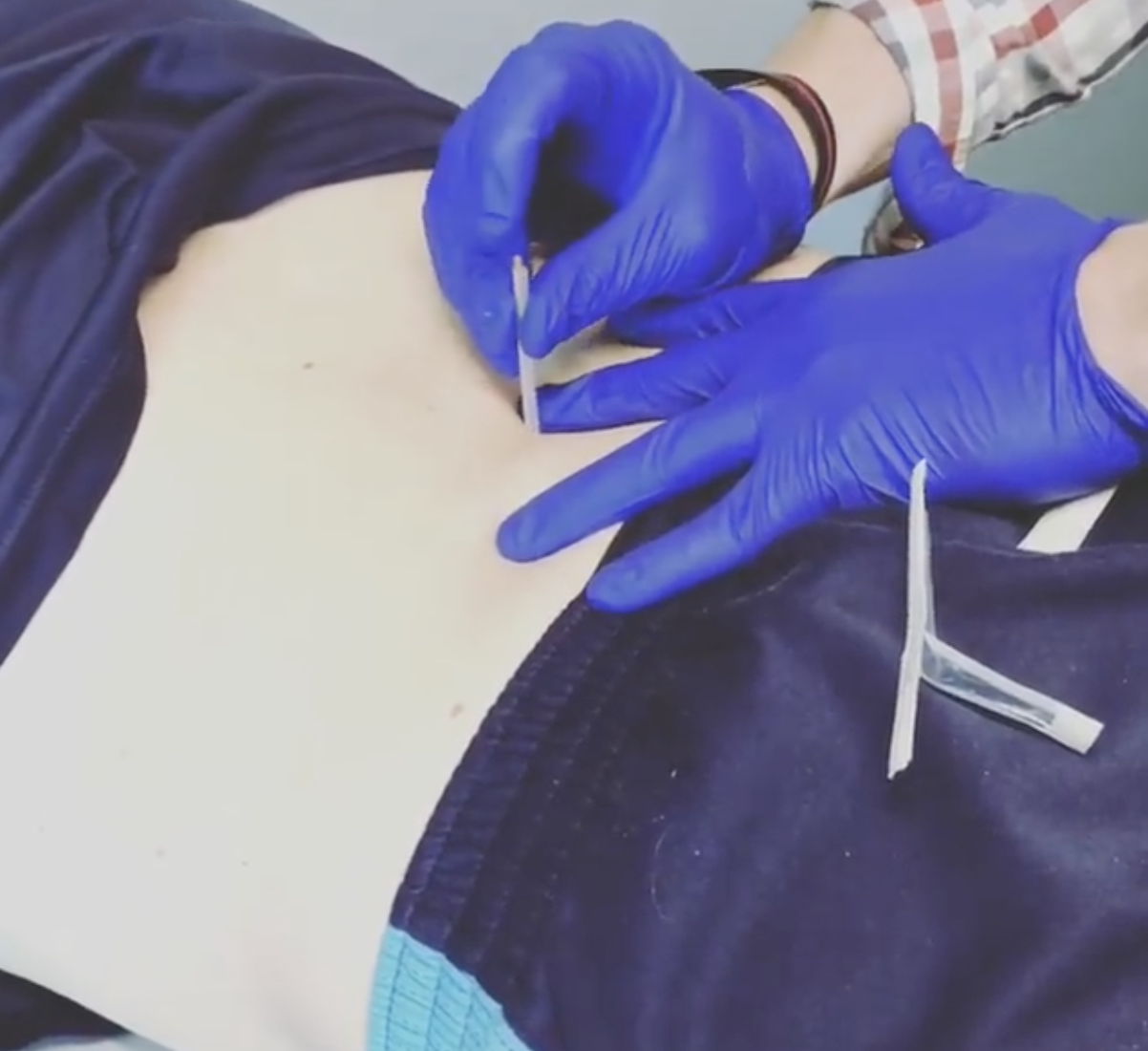Dry needling treatments performed by Physical Therapists have gained in popularity among both clinicians and patients with low back pain. The treatment is designed to reduce pain and restore muscle function. Inserting small, monofilament needs into trigger points within painful muscle groups can lead to immediate changes in pain and movement. While the mechanism of these treatments is still being investigated, early research indicates beneficial changes in low back pain perception, circulation, nervous system, and muscle function are noted after Dry Needling. Consistent with many other treatments for a patient’s low back pain there is likely a group of patients with pain who will benefit most from this Physical Therapy intervention.
Prior research has identified baseline examination items which help predict success with this treatment (Koppenhaver et al. JOSPT. 2015). 72 patients with low back pain underwent an examination followed by a single treatment of dry needling by a Physical Therapist. These patients were re assessed one week after treatment. Patients who experienced low back pain during the exam on a muscle activation test had the best response to the dry needling. These findings make sense given the treatment’s attempt to decrease muscular or myofascial pain often provoked by muscle contraction or stretch.
This same author recently completed a second study to determine which clinical changes are associated with reductions in pain and disability following Physical Therapy dry needling (Koppenhaver et al. Man Ther. 2016). 66 patients with low back pain underwent one session of dry needling to the lumbar muscles following a Physical Therapy examination and ultrasound assessment of their low back muscles. Pain threshold was assessed based on the patient’s ability to tolerate pressure across the lumbar spine. The authors found the individuals with the greatest improvement in symptoms and function after needling also had the greatest improvements in pain tolerance and muscle function at 1 week post needling.
This evidence adds to our knowledge on the effects of dry needling in patients with low back pain. Those who respond best to this treatment may be individuals who have the greatest improvements in pain and lumbar muscle function. To learn more on how dry needling can decrease your pain and improve your function contact or schedule with the physical therapists at Mend in Boulder or Lafayette, Colorado.

